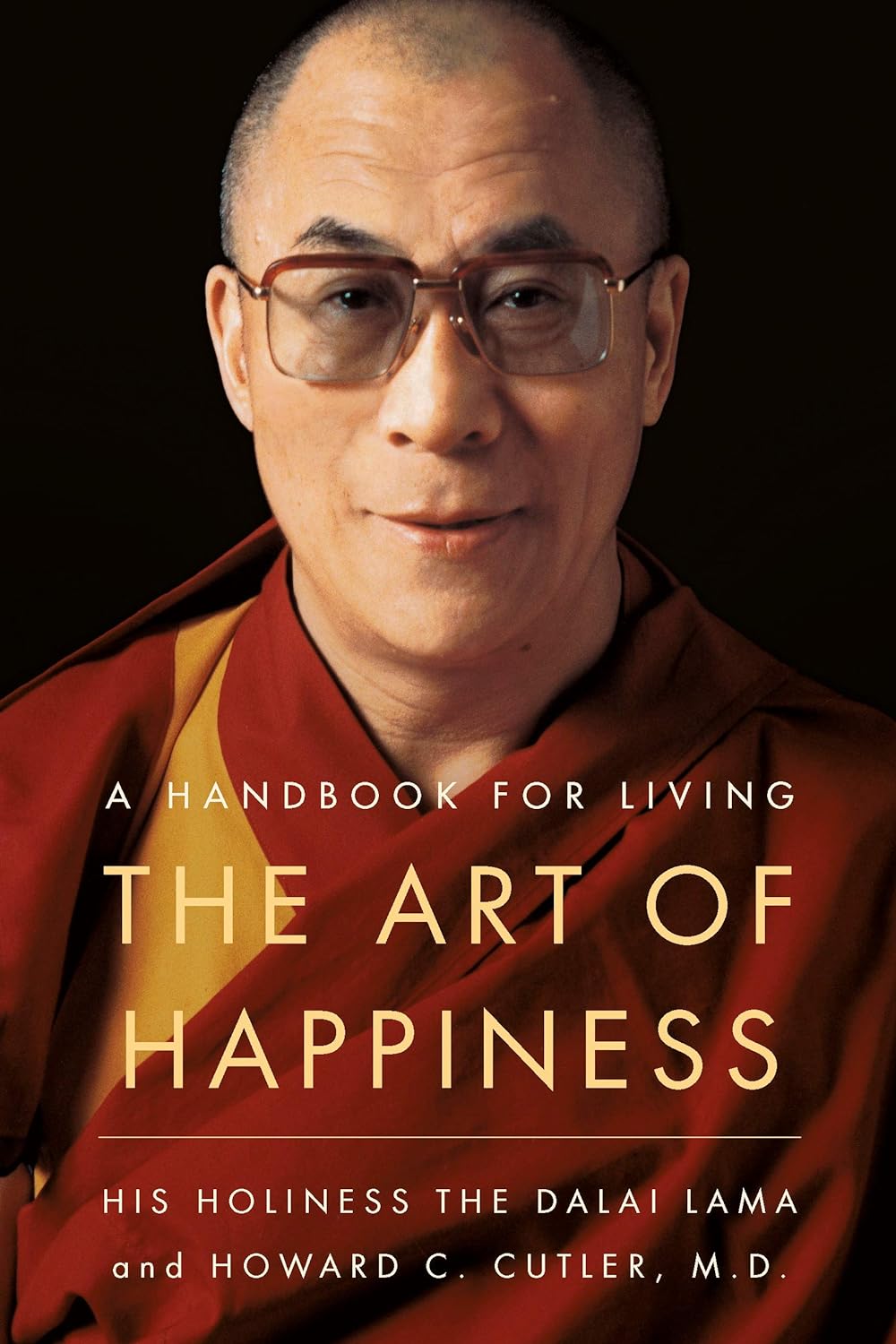Happiness as an Inner State
As we delve into the pages of this remarkable book, we quickly learn that happiness isn't something we chase relentlessly in the external world, like a fleeting mirage. Instead, it is a state of being that resides within us, patiently waiting to be acknowledged. The Dalai Lama, a living embodiment of wisdom and compassion, gently reminds us:
"Happiness is not something ready-made. It comes from your own actions."
These words, laden with timeless wisdom, teach us that our actions and attitudes are the architects of our own happiness. In a world often fixated on the pursuit of material possessions and external validation, this book serves as a guiding light, gently steering us toward the realization that the true source of happiness is within.
Think of it this way: imagine happiness as a radiant sun that always shines within your heart. It might be obscured by clouds of doubt, anxiety, or desire at times, but the sun itself never dims. By cultivating our inner world through practices like mindfulness and self-compassion, we can dissipate those clouds and let our inner sun shine brilliantly.
The Dalai Lama's wisdom is like a warm embrace, comforting us with the understanding that happiness is not elusive; it's our birthright. It's a state of mind we can nurture, regardless of external circumstances.
Compassion and Empathy
Compassion is not merely a fleeting emotion; it's a profound force that can transform lives. As the Dalai Lama shares, "If you want others to be happy, practice compassion. If you want to be happy, practice compassion." Here, he underscores the beautiful reciprocity of compassion, a concept that threads its way through the entire book. It's not just about self-centered happiness; it's about creating a virtuous cycle where your happiness radiates outward, touching the lives of others.
Empathy, on the other hand, is the bridge that connects us to the hearts of those around us. It's about truly understanding someone's feelings, putting ourselves in their shoes, and walking alongside them in their journey. As the book highlights, "Empathy is essentially recognizing the emotion of another person, feeling it as your own." It's a powerful reminder that empathy is more than just nodding in agreement; it's about feeling the emotions of others deeply within ourselves.
Now, let's envision a world where compassion and empathy reign supreme. It's a world where people extend their hands, not to grasp for their own gain, but to uplift others. Imagine a society where understanding and kindness are the currency of interaction, where compassion becomes the driving force behind every decision. This is the world that the Dalai Lama invites us to create, and "The Art of Happiness" serves as our guide.
In this book, you'll discover how compassion and empathy can be nurtured and cultivated within your own heart. You'll learn that they are not abstract ideals but tangible practices that can be woven into the fabric of your daily life. Through anecdotes, wisdom, and practical advice, you'll embark on a journey to harness the profound power of these emotions.
The Role of Mindfulness
Imagine your mind as a serene pond, reflecting the world around you. Now, picture a gentle raindrop falling into that pond. As it touches the surface, ripples emerge, and the reflection becomes distorted. Our minds are like this pond, constantly bombarded with thoughts, worries, and distractions, causing the waters to stir. Mindfulness, as elucidated by the Dalai Lama and Dr. Cutler, is the art of calming these turbulent waters.
"The Art of Happiness" introduces us to the idea that mindfulness is not about escaping reality; it's about embracing it with open arms. The Dalai Lama, a true master of this practice, asserts, "The ultimate source of happiness is not our external circumstances but our mind's quality."
Mindfulness, dear readers, is the art of being fully present in each moment. It's about savoring the taste of that morning coffee, feeling the warmth of a hug, and listening with undivided attention when someone speaks. It's about acknowledging our thoughts and emotions without judgment and gently guiding our focus back to the present.
The book eloquently illustrates how mindfulness empowers us to break free from the shackles of constant worry about the past or future. It provides the key to unlock the treasure chest of inner peace and contentment. The Dalai Lama beautifully reminds us, "There is no need for temples; no need for complicated philosophy. Our own brain, our own heart is our temple; the philosophy is kindness."
Through anecdotes and teachings, the authors show us that mindfulness isn't reserved for the spiritual elite. It's a practice accessible to anyone willing to cultivate it. By embracing mindfulness, we can navigate the ups and downs of life with grace, resilience, and an unwavering smile.
Balancing Materialism and Inner Values
Picture a life where the relentless pursuit of wealth, possessions, and status reign supreme. It's a world where the endless desire for more never quite quenches the soul's thirst for contentment. Yet, the Dalai Lama and Cutler beckon us to step off this relentless treadmill and consider a more fulfilling path.
They remind us that while material possessions can bring fleeting pleasure, true happiness resides in nurturing our inner values. The Dalai Lama himself says, "Too much attachment to material wealth can actually undermine your happiness." It's a powerful insight that challenges our society's prevailing notion that happiness is synonymous with wealth.
As we delve deeper into the book's wisdom, we find that the pursuit of inner values, such as compassion, kindness, and empathy, is not only the path to happiness but also the antidote to the emptiness often associated with materialism. The Dalai Lama beautifully illustrates this idea when he says, "If you want others to be happy, practice compassion. If you want to be happy, practice compassion." This simple yet profound statement highlights how our actions towards others can enrich our own lives.
"The Art of Happiness" encourages us to reevaluate our priorities, urging us to seek fulfillment in our relationships and personal growth rather than in the accumulation of possessions. By shifting our focus from external acquisitions to internal development, we embark on a journey towards a more meaningful and joyful existence.
In the midst of a world that often equates success with material abundance, the Dalai Lama and Howard Cutler illuminate a brighter path—a path where the richness of our character and the depth of our humanity become the true measures of our happiness. It's a message that reminds us that, in the pursuit of a life well-lived, the treasure within us far outweighs any material riches.
Overcoming Negative Emotions
We all have our moments when anger, fear, or anxiety creep in, clouding our days and affecting our relationships. But fear not, for the Dalai Lama's wisdom shines through the pages, offering a beacon of hope and guidance.
In this transformative exploration, the authors share valuable insights on tackling these emotional hurdles. The Dalai Lama reminds us that it is within our power to navigate the stormy seas of negativity and find our way back to tranquility. He says, "Remember that sometimes not getting what you want is a wonderful stroke of luck."
Isn't it a refreshing perspective? Instead of resisting the ebb and flow of life's challenges, we can embrace them as opportunities for growth and self-discovery. The authors encourage us to confront our negative emotions head-on, acknowledging them without judgment. It's a bit like welcoming an old friend, recognizing that they have something important to teach us.
They share practical techniques for coping with these emotions, such as mindfulness and meditation. The Dalai Lama advises, "When you lose, don't lose the lesson." Through these practices, we learn to see beyond the immediate discomfort and discover the hidden gifts in our experiences.
Furthermore, the book reminds us of the power of compassion, not only towards others but also towards ourselves. By treating ourselves with the same kindness and understanding we extend to others, we can soften the harsh edges of negative emotions.
"The Art of Happiness" beautifully illustrates that by acknowledging and embracing our negative emotions, we can transcend them. It's not about denying their existence but rather using them as stepping stones on the path to a more joyful and fulfilling life. As the Dalai Lama says, "Happiness is not something ready made. It comes from your own actions."
Interconnectedness and Relationships
Think of it this way: Have you ever noticed how your mood can instantly brighten when you spend quality time with loved ones, or how a simple act of kindness can create ripples of joy that touch not just you but everyone involved? Well, that's the essence of interconnectedness.
The Dalai Lama, a wise spiritual leader, and Howard Cutler, a seasoned psychiatrist, delve into the heart of human relationships, revealing how our interactions can shape our well-being. They remind us that we are not isolated beings but threads in the grand tapestry of life, each of us contributing to the overall pattern.
In the book, His Holiness shares profound insights, saying, "The more we care for the happiness of others, the greater is our sense of well-being." This simple yet profound statement underscores the power of compassion and empathy in fostering strong bonds with those around us. By extending our compassion beyond ourselves, we strengthen our interconnectedness, and as a result, our own happiness flourishes.
Cutler, drawing from his psychiatric expertise, reinforces this idea with examples and practical advice. He shows us that building meaningful relationships involves not just giving, but also receiving support. It's a two-way street where mutual care and understanding create a positive feedback loop of happiness.
So, as we journey through "The Art of Happiness," we uncover the profound truth that our connections with others are not just incidental but integral to our well-being. By nurturing these connections and realizing the beauty of interconnectedness, we open doors to a happier, more fulfilling life.
In essence, the book invites us to embrace this theme, reminding us that our happiness is not a solitary pursuit but a shared dance in the symphony of life, where each note we play and each connection we foster adds to the beautiful melody of our existence.

